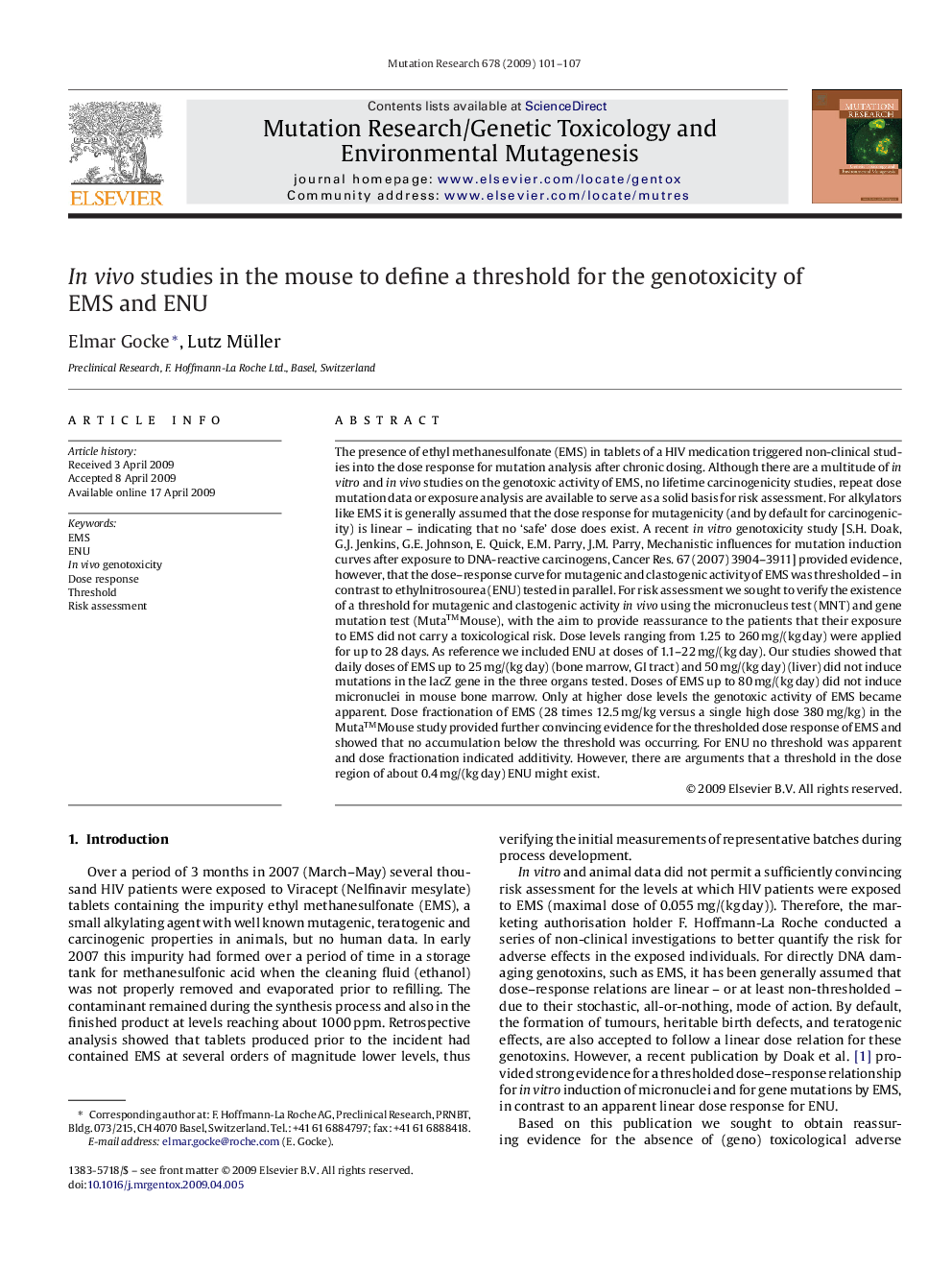| Article ID | Journal | Published Year | Pages | File Type |
|---|---|---|---|---|
| 2148661 | Mutation Research/Genetic Toxicology and Environmental Mutagenesis | 2009 | 7 Pages |
The presence of ethyl methanesulfonate (EMS) in tablets of a HIV medication triggered non-clinical studies into the dose response for mutation analysis after chronic dosing. Although there are a multitude of in vitro and in vivo studies on the genotoxic activity of EMS, no lifetime carcinogenicity studies, repeat dose mutation data or exposure analysis are available to serve as a solid basis for risk assessment. For alkylators like EMS it is generally assumed that the dose response for mutagenicity (and by default for carcinogenicity) is linear – indicating that no ‘safe’ dose does exist. A recent in vitro genotoxicity study [S.H. Doak, G.J. Jenkins, G.E. Johnson, E. Quick, E.M. Parry, J.M. Parry, Mechanistic influences for mutation induction curves after exposure to DNA-reactive carcinogens, Cancer Res. 67 (2007) 3904–3911] provided evidence, however, that the dose–response curve for mutagenic and clastogenic activity of EMS was thresholded – in contrast to ethylnitrosourea (ENU) tested in parallel. For risk assessment we sought to verify the existence of a threshold for mutagenic and clastogenic activity in vivo using the micronucleus test (MNT) and gene mutation test (Muta™Mouse), with the aim to provide reassurance to the patients that their exposure to EMS did not carry a toxicological risk. Dose levels ranging from 1.25 to 260 mg/(kg day) were applied for up to 28 days. As reference we included ENU at doses of 1.1–22 mg/(kg day). Our studies showed that daily doses of EMS up to 25 mg/(kg day) (bone marrow, GI tract) and 50 mg/(kg day) (liver) did not induce mutations in the lacZ gene in the three organs tested. Doses of EMS up to 80 mg/(kg day) did not induce micronuclei in mouse bone marrow. Only at higher dose levels the genotoxic activity of EMS became apparent. Dose fractionation of EMS (28 times 12.5 mg/kg versus a single high dose 380 mg/kg) in the Muta™Mouse study provided further convincing evidence for the thresholded dose response of EMS and showed that no accumulation below the threshold was occurring. For ENU no threshold was apparent and dose fractionation indicated additivity. However, there are arguments that a threshold in the dose region of about 0.4 mg/(kg day) ENU might exist.
